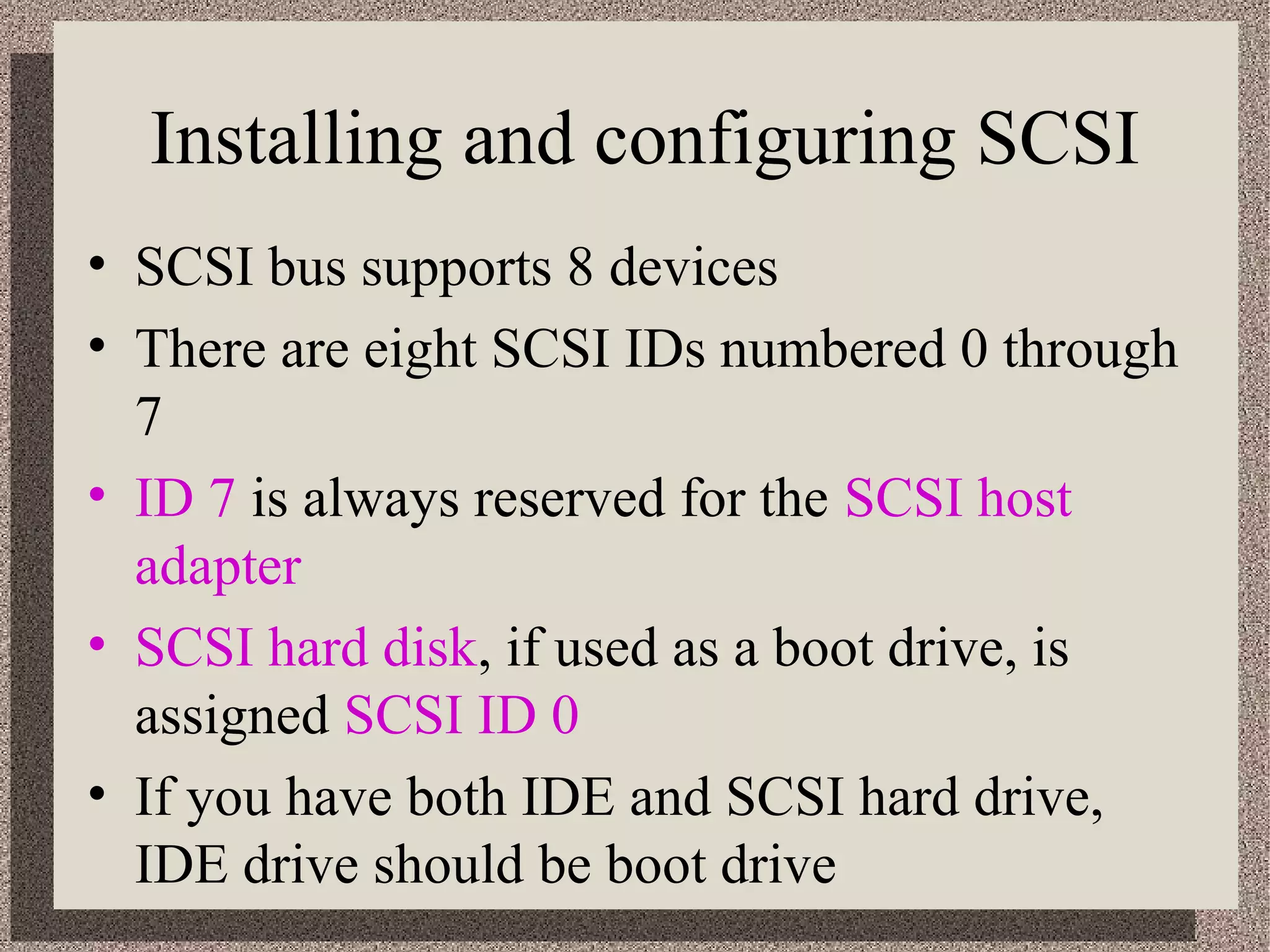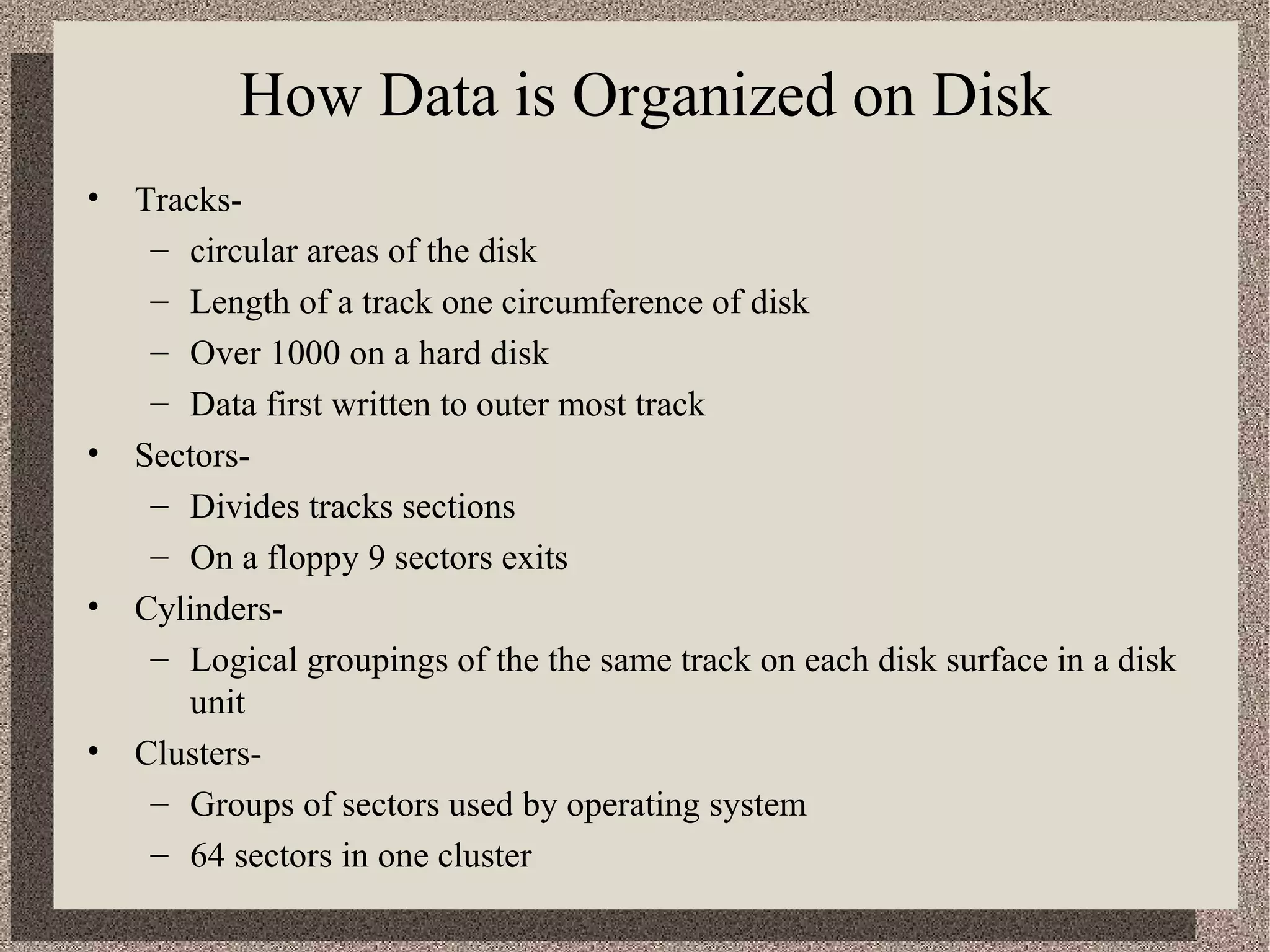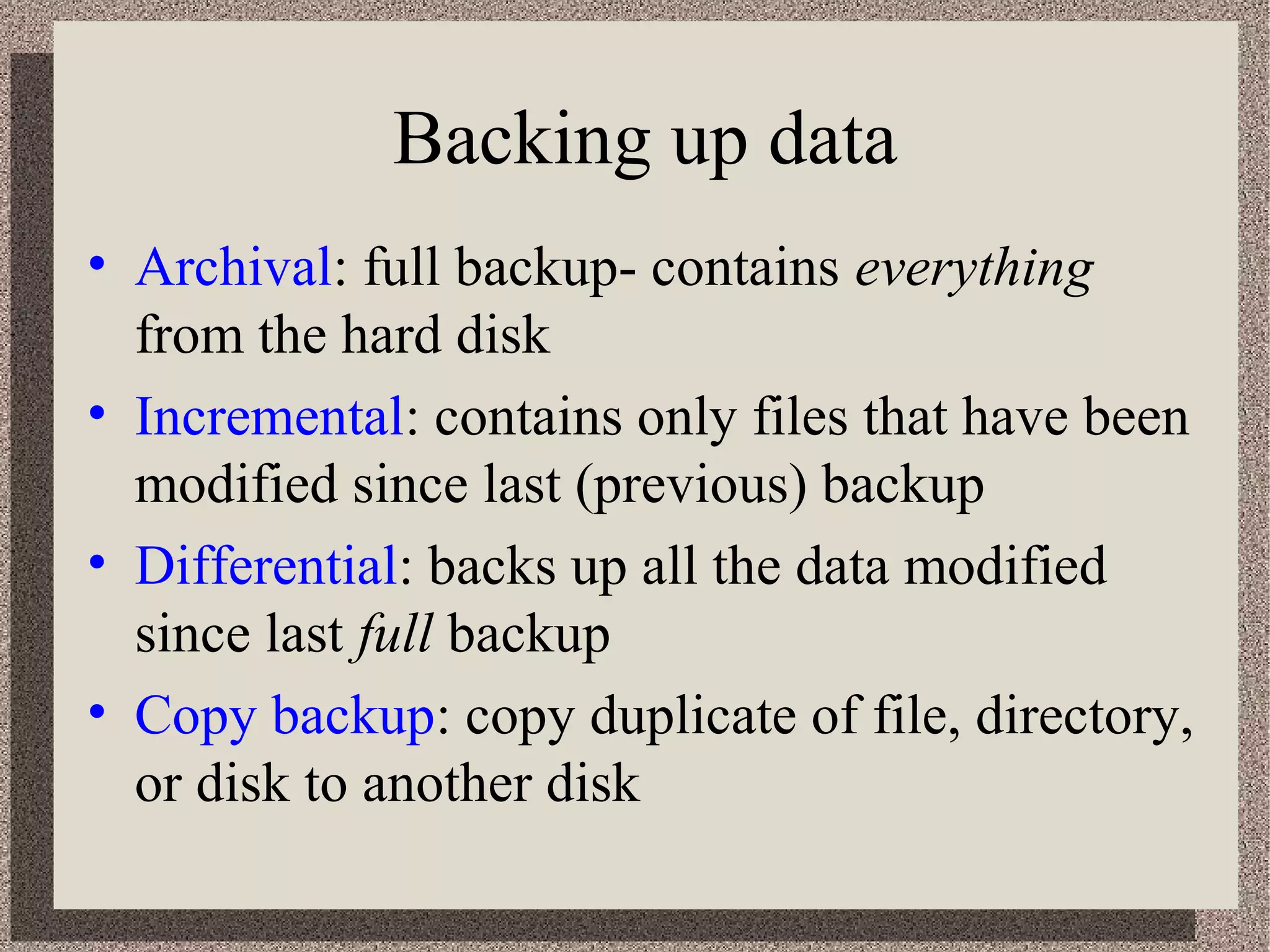Hard disks are organized into tracks and sectors through low-level formatting. Partitions divide the hard disk into separate areas that function as individual drives. High-level formatting defines the file allocation table (FAT) for each partition to locate files. Common storage devices include IDE/EIDE and SCSI hard drives, floppy disks, and CD-ROMs. RAID configurations provide fault tolerance through disk redundancy and parity.




















